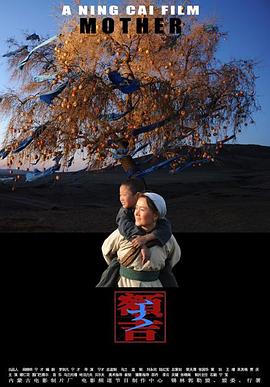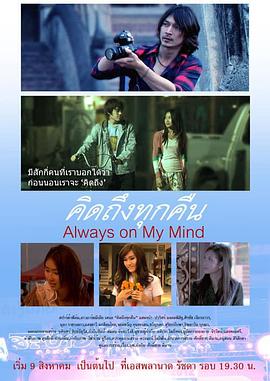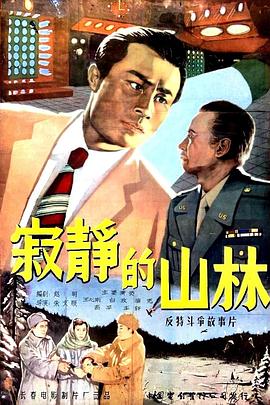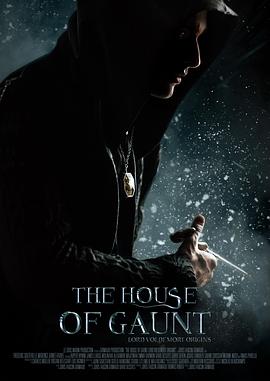欧洲的某个地方
2.0分播放:
- 上映年份:1948 地区:其它 类型:剧情片
- 更新时间:2024-08-09 05:08:19
- 豆瓣评分:2.0
- 主演:Artúr,Somlay,Miklós,Gábor,Zsuzsa,Bánki
- 导演:Radványi,Géza
剧情介绍
影片名称:欧洲的某个地方
影片别名:ouzhoudemougedifang
上映时间:1948年
国家/地区:其它
影片类型:剧情片
影片语言:其它
影片导演:Radványi,Géza
影片主演:Artúr,Somlay,Miklós,Gábor,Zsuzsa,Bánki
资源类别:全集完整未删减版
资源更新:HD中字
总播放次数:504
Radványi,Géza导演执导的《欧洲的某个地方》,1948年上映至今获得了不错的口碑,由Artúr,Somlay,Miklós,Gábor,Zsuzsa,Bánki等主演的一部不错的剧情片。
欧洲的某个地方剧情:Somewhere in the remote region, the war ends. In the midst of ruined cities and houses in the streets, in rural hamlets, everywhere where people still live, are children who have lost their homes and parents. Abandoned, hungry, and in rags, defenseless and humiliated, they wander through the world. Hunger drives them. Little streams of orphans merge into a river which rushes forward and submerges everything in its path. The children do not know any feeling; they know only the world of their enemies. They fight, steal, struggle for a mouthful of food, and violence is merely a means to get it. A gang led by Cahoun finds a refuge in an abandoned castle and encounters an old composer who has voluntarily retired into solitude from a world of hatred, treason, and crime. How can they find a common ground, how can they become mutual friends The castle becomes their hiding place but possibly it will also be their first home which they may organize and must defend. But even for this, the price will be very high. To this simple story, the journalist, writer, poet, scriptwriter, movie director, and film theoretician Bé(🌭)la Balázs applied many years of experience. He and the director Géza Radványi created a work which opened a new postwar chapter in Hungarian film. Surprisingly, this film has not lost any of its impact over the years, especially on a profound philosophical level. That is to say, it is not merely a movie about war; it is not important in what location and in what period of time it takes place. It is a story outside of time about the joyless fate of children who pay dearly for the cruel war games of adults. At the time it was premiered, the movie was enthusiastically received by the critics. The main roles were taken by streetwise boys of a children's group who created their roles improvisationally in close contact with a few professional actors, and in the children's acting their own fresh experience of war's turmoil appears to be reflected. At the same time, their performance fits admirably into the mosaic of a very complex movie language. Balázs's influence revealed itself, above all, in the introductory sequences an air raid on an amusement park, seen in a montage of dramatic situations evoking the last spasms of war, where, undoubtedly, we discern the influence of classical Soviet cinematography. Shooting, the boy's escape, the locomotive's wheels, the shadows of soldiers with submachine guns, the sound of a whistle—the images are linked together in abrupt sequences in which varying shots and expressive sharp sounds are emphasized. A perfectly planned screenplay avoided all elements of sentimentality, time-worn stereotypes of wronged children, romanticism and cheap simplification. The authors succeeded in bridging the perilous dramatic abyss of the metamorphosis of a children's community. Their telling of the story (the scene of pillaging, the assault on the castle, etc) independently introduced some neorealist elements which, at that time, were being propagated in Italy by De Sica, Rossellini, and other film artists. The rebukes of contemporary critics, who called attention to formalism for its own sake have been forgotten. The masterly art of cameraman Barnabás Hegyi gives vitality to the poetic images. His angle shots of the children, his composition of scenes in the castle interior, are a living document of the times, and underline the atmosphere and the characters of the protagonists. The success of the picture was also enhanced by the musical art of composer Dénes Buday who, in tense situations, inserted the theme of the Marseilaise into the movie's structure, as a motive of community unification, as an expression of friendship and the possibility of understanding. Valahol Europaban is the first significant postwar Hungarian film. It originated in a relaxed atmosphere, replete with joy and euphoria, and it includes these elements in order to demonstrate the strength of humanism, tolerance, and friendship. It represents a general condemnation of war anywhere in the world, in any form.
《欧洲的某个地方》在其它发行,亚瑟影院_2024最新免费电影_热播电视剧在线观看收集了《欧洲的某个地方》PC网页端在线观看、手机mp4免费观看、高清云播放等资源,如果你有更好更快的资源请联系亚瑟影院_2024最新免费电影_热播电视剧在线观看。
推荐影片
常见问题
1.请问哪个APP/平台可以免费在线观看剧情片《欧洲的某个地方》?速度快的!!!
樱花动漫网友:《欧洲的某个地方》免vip在线观看地址:欧洲的某个地方
2.《欧洲的某个地方》是什么时候上映/什么时候开播的?
3.《欧洲的某个地方》都有哪些演员?
西瓜影院网友:Artúr,Somlay,Miklós,Gábor,Zsuzsa,Bánki
4.剧情片《欧洲的某个地方》一共有多少集?
电影吧网友:现在是全集HD中字
5.《欧洲的某个地方》有哪些网站可以下载?
6.《欧洲的某个地方》的票房有多少?
7.《欧洲的某个地方》豆瓣评分有多少?
豆瓣评分:2.0
8.《欧洲的某个地方》评价怎么样?
Mtime时光网网友评价:《欧洲的某个地方》看完了,主演Artúr,Somlay,Miklós,Gábor,Zsuzsa,Bánki说愿意用十发炮弹换班长的那一刻,我热泪盈眶。作为一部只拍了两个月的电影,这样的完成度已经算很不错了,整体值回票价。
丢豆网网友评论:Radványi,Géza导演的作品,有点超出预期,三个导演的风格合成一个,还真看不出那部分是谁拍的。最后说一句,Artúr,Somlay,Miklós,Gábor,Zsuzsa,Bánki是真的牛!!
豆瓣电影网友:《欧洲的某个地方》不同于其他作品,没有紧迫感、虚浮的情节及杂乱的画面,却在不断教导我们,不像老师家长苦口婆心语重心长的教诲(为遵重在这里我省略掉啰嗦这词)。我们看电影电视剧亦或综艺动漫逗号,往往是融入进去,在不知不觉中去了解这些似乎不容易被我们所发现、所理解的道理。再说近一点,看视频时设身处地会发现这是现实中更近教导的教导!


















